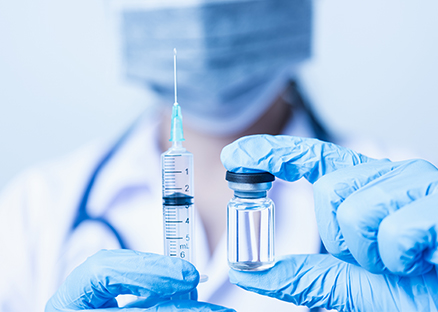Disposable medical device industry 2025: Policy pressure and technological innovation reshape the industry landscape
1、 Regulatory storm: frequent incidents of illegal reuse force industry standardization
Recently, Liaoning Provincial People's Hospital was warned for the repeated use of disposable medical devices, becoming a typical case of compliance supervision in the medical industry in 2025. The Shenyang Municipal Health Commission has issued a warning to the hospitals involved in accordance with Article 90 of the Regulations on the Supervision and Administration of Medical Devices, once again sounding the industry alarm. Data shows that from 2023 to 2025, over 20 hospitals across the country have been fined for similar violations involving high-value consumables such as ultrasound blades and ablation needles, with a maximum fine of 650000 yuan per offense.
Deep contradiction: Economic interests drive and compliance risks coexist. Some hospitals illegally reuse high-value consumables with a unit price of thousands of yuan (such as ultrasound blades priced at 8000 yuan per unit) in order to reduce costs, forming a gray industry chain. For example, in the case of Liuhua Hospital in Shenzhen, doctors and distributors illegally profited nearly 6 million yuan by reusing cryoablation needles, and were ultimately sentenced. In response, the National Health Commission has launched a pilot program for the Unique Device Identification (UDI) system, which enables full process traceability through the use of a "digital ID card". Any unauthorized reuse behavior can be automatically alerted by the system.
2、 Policy driven: UDI system and centralized procurement reshape industry ecology
UDI system strengthens security defense line
Since China launched the UDI pilot in 2019, it has covered high-risk products such as heart stents and artificial joints. By 2025, the UDI database will have accumulated over 4.5 million declaration data, achieving precise management such as cold chain monitoring and patient medical record association through RFID technology. For example, after implanting UDI chips into orthopedic instruments in a certain province, abnormal transportation can automatically freeze the flow direction to prevent unqualified products from entering clinical practice.
Centralized procurement and international market expansion
The EU has launched an anti-dumping investigation into Chinese infusion packaging materials, with tariffs increasing by 15% -20%, forcing leading companies such as Kelun Pharmaceutical to accelerate their overseas production capacity layout. At the same time, demand in the African and Southeast Asian markets has surged, and Tiankang Medical's Rwanda factory produces 300 million safety syringes annually, filling the local supply chain gap. The domestic centralized procurement policy promotes the increase of industry concentration. Companies such as Mindray Medical and BGI Genomics strengthen their competitiveness through mergers and acquisitions, and the industry CR5 (market concentration) will increase to 38% by 2024.
3、 Technological Innovation: Material Revolution and Intelligent Upgrade
Breakthrough in biodegradable materials
Shandong Weigao Group launches PLA biodegradable infusion bags, reducing carbon emissions by 70%; The laminated rubber stopper developed by Hualan Co., Ltd. uses Glomax LL calcined kaolin, which increases the microbial barrier rate by 32% and reduces the puncture self-healing time to milliseconds. It is expected that by 2030, the market share of biodegradable materials will exceed 15%.
3D Printing and Intelligent Devices
3D printing technology enables personalized customization of products such as vascular stents and surgical guides, increasing production efficiency by 40%. The FUXI intelligent infusion robot launched by Fuxi Jiuzhen uses infrared and ultrasound multimodal fusion technology to complete venipuncture in 1 minute and has been tested in 200 tertiary hospitals.
Long term sustained release and painless technology
The patch infusion patch developed by the Zhejiang University team uses a microneedle device to achieve 24-hour continuous administration, with a daily dose of 225mg, which is three times more efficient than traditional injection; The drug crystal suspension technology developed by MIT can achieve drug sustained release for 2 years with a single injection.
4、 Market Expansion: Aging and Precision Medicine Drive the Billion Dollar Race
The market size of disposable medical devices in China has grown from 1.5 billion yuan in 2018 to 2.7 billion yuan in 2023, with a compound annual growth rate of 13.4%, and is expected to exceed 4.3 billion yuan by 2025. The core growth drivers include:
Aging demand: China's population aged 60 and above accounts for over 30%, and chronic disease management has led to a demand for consumables such as syringes and catheters.
Precision medicine: mRNA vaccines, GLP-1 drugs (such as semaglutide) have exploded, and orders for high-end products such as smart injection pens have exceeded 10 million units.
Emerging markets: The shortage of medical infrastructure in Africa and Southeast Asia has given rise to opportunities for localized production, and the annual output value of CR Technology's oral liquid rubber stoppers has exceeded 160 million yuan.
5、 Challenges and Prospects: Cost Pressure and the Game of Sustainable Development
High cost pressure: Fluctuations in prices of medical grade stainless steel and plastic, coupled with an extended FDA review cycle of 18 months, are expected to result in a 25% elimination rate for small and medium-sized enterprises.
Green transformation: The IECQ QC 080000 standard promotes zero VOC emissions in production, but the research and development cost of biodegradable materials is high, and companies need to balance environmental investment and profitability.
Future outlook: The industry will accelerate integration, and top enterprises with UDI compliance capabilities and core patents (such as Hualan Shares and Mindray Medical) are expected to seize 20% of the global market share. The demand for intelligence, reducibility, and precision medicine will drive the industry from "cost competition" to "technology dominance".
-

Innovation and Market Trends in Dental Rinse Needle Technology: Safety and Efficiency Become Industry Focus
-

Development Trends and Innovation Breakthroughs of the Syringe Industry in 2025: Global Market Reshaping and Technological Innovation Parallel
-

We warmly celebrate the official launch of the official website of Wuxi GuKang Medical Equipment Co., Ltd
